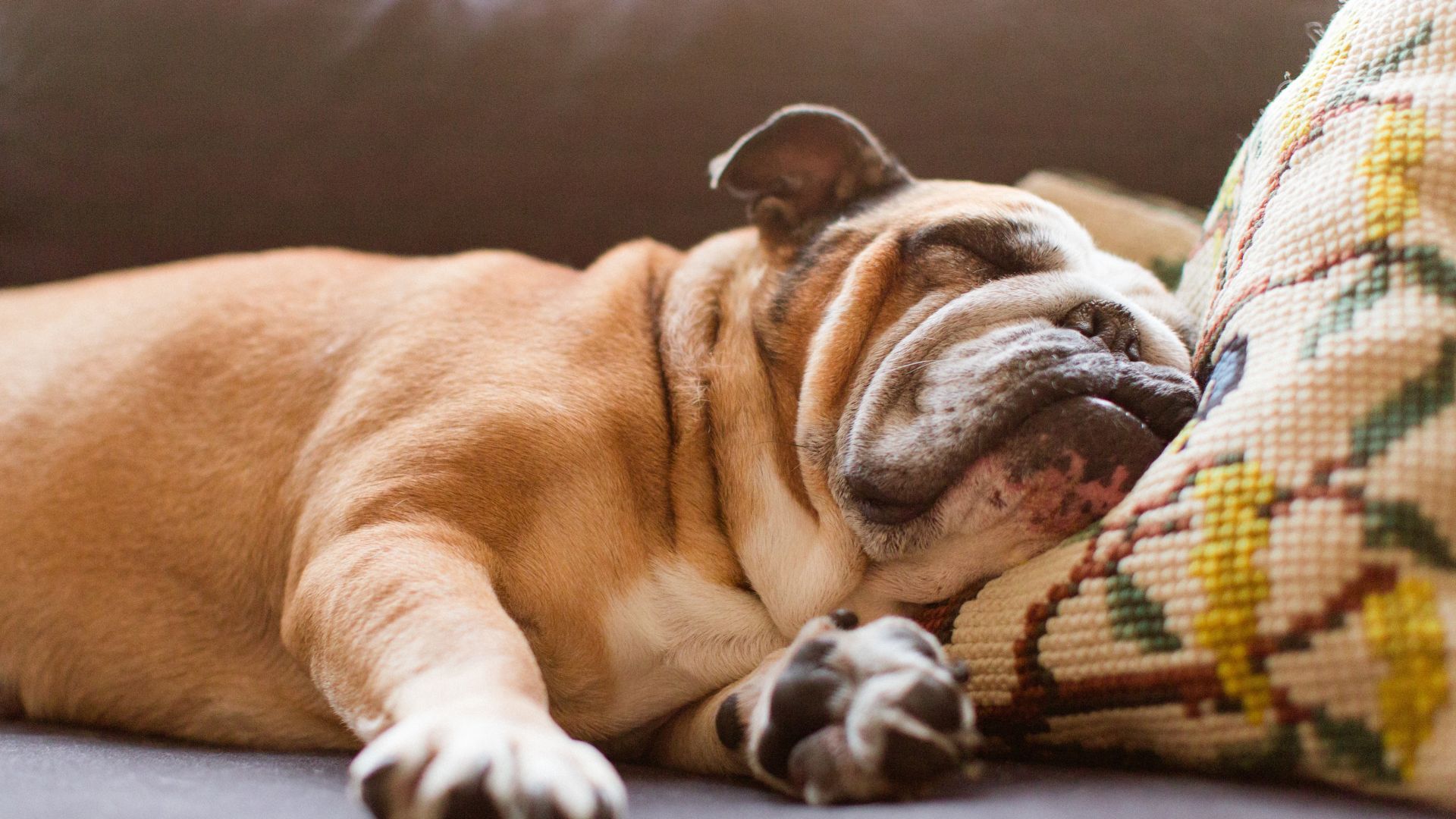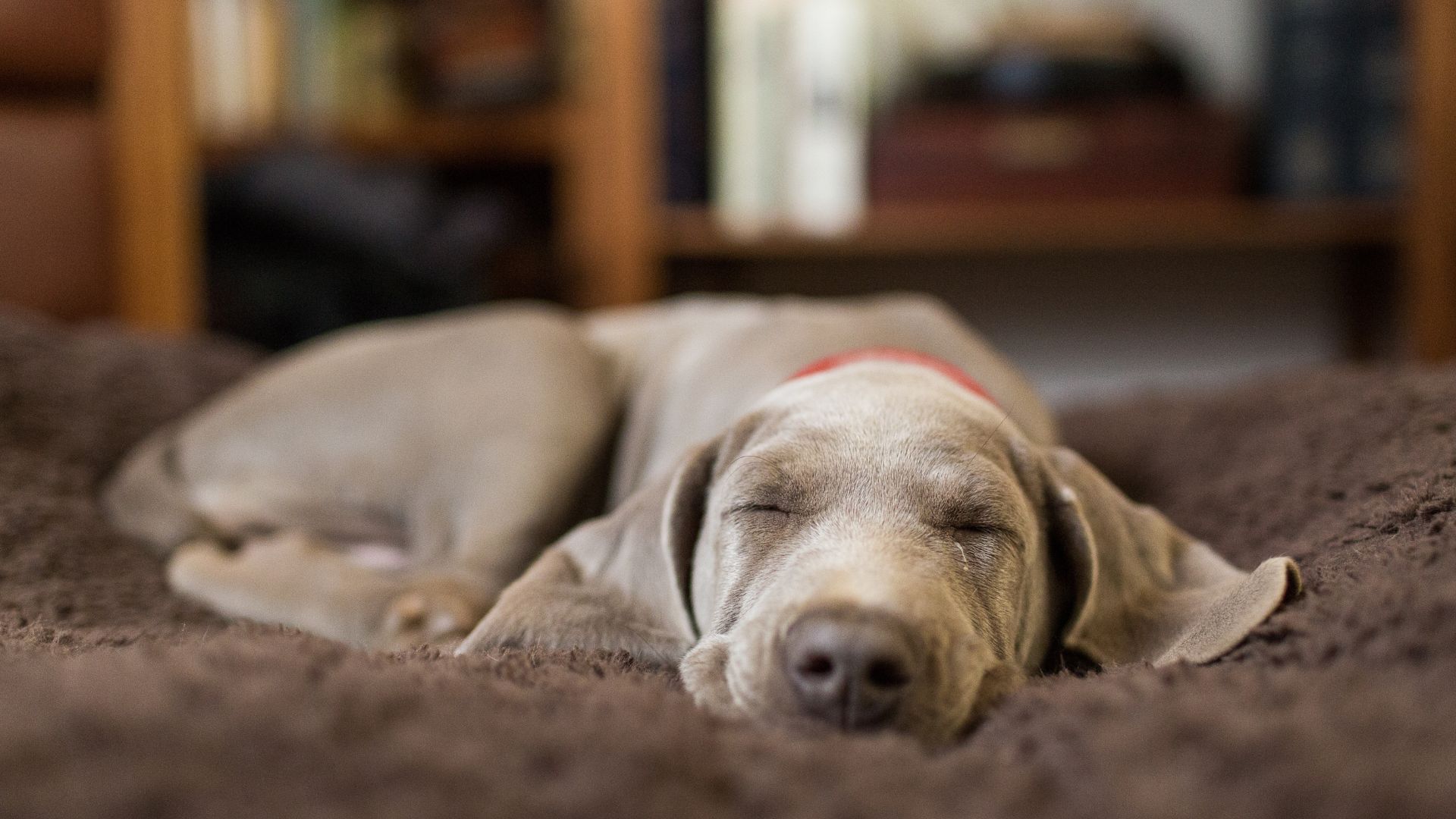Is it normal for a dog to sleep all day?
Dogs need a lot of sleep, but is it normal for a dog to sleep all day? We’ve got all the answers on why your dog loves to snooze so much.

It’s a dog’s life - sleep, eat, walk, sleep, repeat. If you’re looking at your dog right now, I’m guessing they are most likely asleep! But are you questioning ‘is it normal for a dog to sleep all day’?
While you may have invested in the best dog beds, have you considered whether your dog is using them to get the best shut eye? Regular sleep throughout the day is of great importance to our dogs who are polyphasic sleepers - meaning they rely on sleeping more than two periods each day.
As a Certified Canine Behaviorist, I think one of the most undervalued areas of a dog’s routine is the amount of quality sleep and rest the dog achieves. Often behavioral challenges are linked to a dog getting poor quality downtime, meaning they don’t get to lower their stress levels while resting. We know how grumpy we can feel when our sleep gets disturbed - and dogs need around double the amount of rest as we humans do.
Sleep allows our dogs to process memories, consolidate learning, heal or build new cells, and awake feeling refreshed. It also helps them to reduce cortisol levels - the stress hormone. Certain factors including age, developmental stage, and some illnesses can impact sleep - so it is important to seek out professional advice if you’re concerned. If you’re wondering if your dog is sleeping too much, read on for the lowdown on canine slumber.
Is it normal for dogs to sleep all day?
It often shocks new puppy parents when I advise them that their young pup should be getting in the region of 18-20 hours of sleep a day. Getting plenty of quality sleep allows our puppies to physically develop, process new lessons from the day, and get rid of some of the stresses that come with being a new pup in a big human world. When we don’t allow our puppies the opportunity to get the right amount of sleep, we often see the over-tired toddler syndrome - resulting in behaviors such as nipping and biting.
Most adult dogs, depending on lifestyle, will usually snooze around 12-16 hours per day with senior dogs perhaps increasing their periods of rest.
Many dogs will get better rest overnight as their home is quieter and darker. While dogs are actually crepuscular in nature - meaning that, when wild or feral, dogs are most active during the twilight hours of dawn and dusk - domesticated dogs tend to follow their humans’ patterns and increase their sleep in the evenings and overnight. But if you’re trying to work out how to get your dog to sleep later in the morning - then working with an ethical trainer might be a good place to start as they will help you to work out the best routine to help your dog sleep longer.
Get the best advice, tips and top tech for your beloved Pets

Why do dogs need so much sleep?
During a typical night, adult humans spend around 20-25% of their total sleep in REM (Rapid Eye Movement) stage, a percentage that is even higher in infants and slightly elevated in the elderly. Despite having similar sleep patterns to humans, dogs spend substantially less time in REM, approximately only 10% of their sleeping session. Plus they sleep in shorter bursts, limiting their opportunity to achieve longer periods of deep sleep.
Just like for us, having the odd bad day of sleep isn’t going to be a disaster for our dogs. But they do need to be getting quality shut-eye on a regular basis. If your dog’s sleep appears to be impacted by health, environment, or you’re wondering ‘why is my dog sleep barking?’ suddenly, then it’s worth speaking to your vet.
Similar to humans, when deprived of REM sleep, dogs can exhibit symptoms such as anxiety, irritability, and difficulty concentrating. While dogs need a certain amount of the stress hormone Cortisol in their body to perform natural bodily functions, a toxic amount can result in all sorts of physical and behavioral disorders. Sleep helps reduce the levels of this hormone. Sleep also aids in memory processing, consolidation of learning, cellular regeneration, and just a general fresh feeling… so you can see it’s a pretty important part of our pooches’ days.
Do some dog breeds sleep more than others?
Sleep quality and length is generally more likely to be influenced by factors such as size, age, health, and an individual’s emotional wellbeing rather than their specific breed. However, this can mean some breeds are more likely to sleep for longer - especially giant breeds during puppyhood.
Large breeds such as Mastiffs, Great Danes, and Saint Bernards typically require more sleep compared to smaller breeds. This is partly due to their larger bodies, which demand more energy expenditure during waking hours.
Breeds that were bred for specific tasks such as those that require short bursts of energy - such as sight hounds or guarding breeds - may be more inclined to enjoy long periods of rest to gear them up for the next energy requirement. Some hunting breeds will require longer periods of activity - and heightened alertness - so they may sleep much less.
While breed tendencies can provide insight into a dog's sleep habits, it's essential to remember that every dog is an individual, and factors like environment and lifestyle can also influence a dog's sleep pattern.

When should you worry if your dog sleeps too much?
While we expect dogs to sleep a large majority of their day, excessive levels of sleep could indicate an underlying health issue. If your dog is sleeping significantly more than usual and shows other concerning symptoms such as lethargy, lack of appetite, weight loss, or behavioral changes, it's time to consult a vet.
Potential health issues that could cause excessive sleeping include infections, pain, hormonal imbalances, arthritis, heart problems, or even psychological distress. Changes in sleep patterns can be indicative of discomfort or illness. Additionally, certain medications or changes in the environment can also affect a dog's sleep habits.
With all dogs, keeping a journal to track their sleep can be useful to ensure they’re getting enough rest without noticing any significant changes.
Looking to learn more about your dog’s behavior? Here’s everything you need to know about dog body language.

Caroline Wilkinson is a Certified Animal Behaviorist. She is a Full (assessed) Member of the Association of Professional Dog Trainersand INTODogs – as well as a Registered Training Instructor (ABTC). Caroline is also a Certified Real Dog Yoga Practitioner and an Applied Canine Zoopharmacognosist.
As the founder of digital pet coaching service Barket Place, Caroline has a passion for improving connections between human and hound, with a focus on relationships and reduction of stress for canines living in a human world. She helps pet parents, like you, to work through challenges they may be experiencing with their dog's behavior, so that they can get back to the important job of loving their dog.
Caroline writes for Edition Dog Magazine, as well as a number of trusted pet brands. She also speaks around the country – presenting workshops and webinars with a focus on living more mindfully alongside our canine companions. She is also the co-host of chart-topping podcast, ‘Supporting Both Ends of the Lead’ and has spoken about dangerous dogs on BBC Points West and BBC Radio Bristol.
